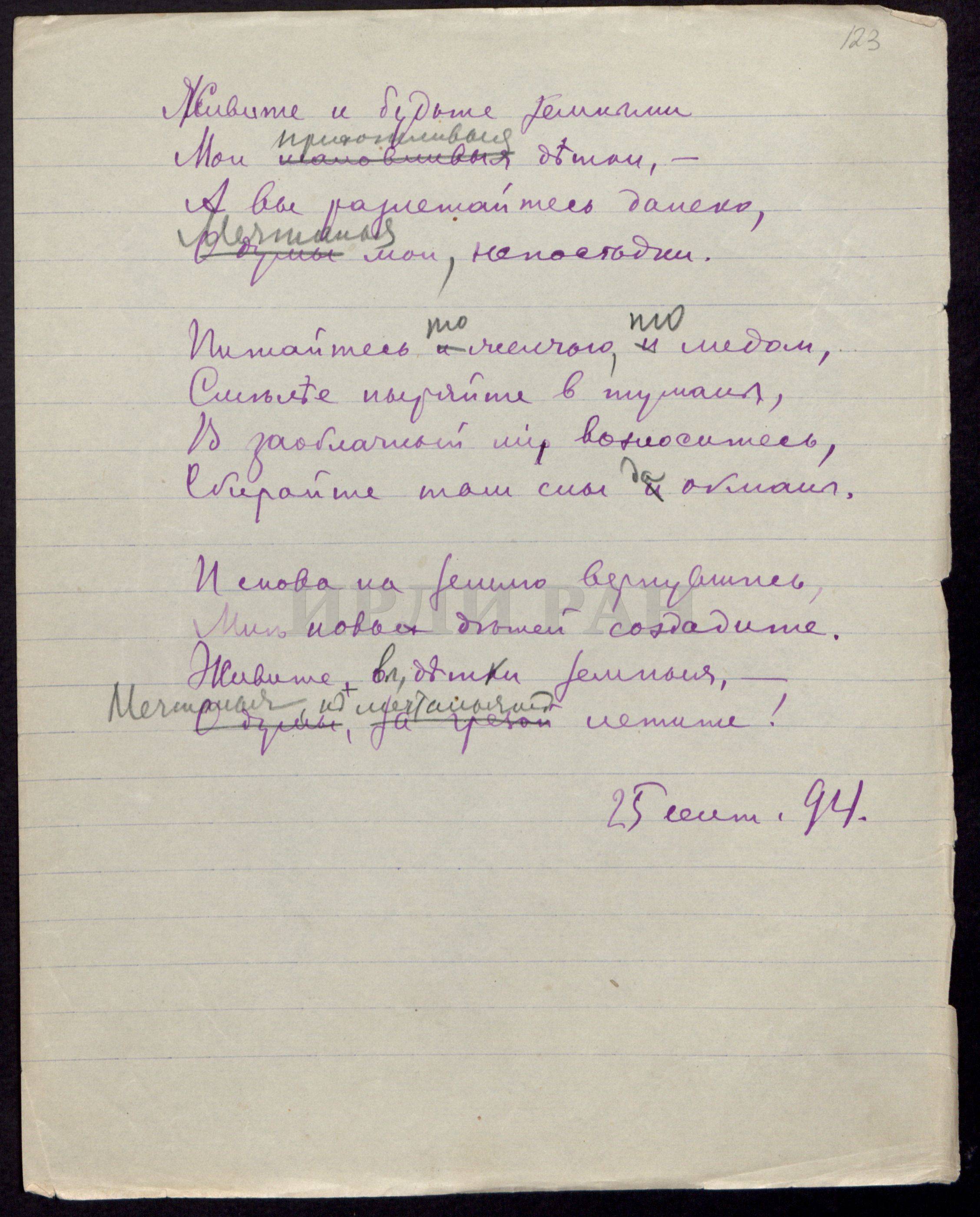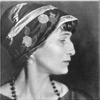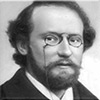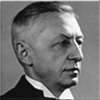Date as key to text history (based on materials for description of Fedor Sologub’s notebooks)*

T. V. Misnikevich
Fedor Sologub’s notebooks represent unique material which fully documents special features of the poet’s creative work. The good condition of the autographs – from Sologub’s first poetic works till poems written not long before death[1] – provides with an opportunity to reconstruct the main modes of poetic text organization, as well as analyze the principles of dating.
As it has already been noticed,[2] the poet attached particular attention to the original creative impulse, life and creative context, within which a literary work was born and formed, tried, as precisely as possible, to indicate the text “coordinates” (date, chronological number, ordinal number of poems created on a given day). Altered texts that have new dates are normally placed among the autographs together with an earlier version. In the author’s chronological index the poems with several dates have individual cards with reference to the starting point in the series of reworks, which indicate the dates when the poet addressed the text. It is the cards with the earliest date that list all the dates that correspond to different stages of text design.
Apparently, the date of the first creative concept formation was for Sologub the starting point for further development of the poetic text, namely its shaping, creation of new independent versions and inclusion into various compositional unities. As a rule, the initial date was assigned the status of the “official”. This is obviously proven by the fact that Sologub typically published the poem or registered it in “Materials for complete poems” (further – MFCP), which in a way reflects the last will of the poet,[3] with the date that corresponds with the initial stage of text design, ignoring all subsequent dates.
In these cases the date might as well serve as kind of a key to the subtext of a poem, enables to reveal the creative and biographical context that triggered its creation, although is not necessarily connected with the factual start of work on the text.[4]
Let’s examine a particular example.
Among other poems dated August 1891, the 1890–1891 notebook contains a text which was not published during Sologub’s life – a sonnet with a double date: August 4, 1891, August 9, 1893 (original version of line 1 – “Razvitiie idet nespeshnymi shagami…”, final one – “Pril’nul ko mne, sheptal bagrovymi gubami…”).[5] This poem is also registered with the same date in the author’s chronological index.[6] However, in the alphabetical index it is registered with the sole date: August 4, 1891. In MFCP the poem is represented by two typewritten copies of the text that corresponds to the upper layer of the autograph.[7] Typescript 1, named “Sonnet”, is not dated; typescript 2, untitled, with ink corrections, st. 2, 11–12, dated August 4, 1891. Besides, Sologub’s personal fund in RGALI contains another typescript of the poem (the text corresponds with typescript 1 from MFCP); the date – August 9, 1891 – is handwritten by the poet himself.[8]
It is fairly possible that one of the dates if fictitious. The autograph of the poem (clean, with corrections, written in ink, synchronous corrections in ink, later ones in pencil) supports the date August 9, 1893. According to archeographical evidence – color of ink, handwriting features, pen pressure – the text must have been written at one sitting. The date August 9, 1893 is marked in ink under the text, apparently, at the time of its creation. The date August 4, 1891 was included in pencil opposite the second line, as well as above the text of the poem, possibly when completing its editing. An indirect argument in favor of this date is that the poem is written on the back of an empty form of yearly pupil attestation at Vytegra teachers seminary, (as is known, Sologub left Vytegra in September 1892). However, the poet might have used the same form as writing paper later as well. The date August 9, 1891 is most likely to be author’s contamination. Hence, for convenience we can accept the date August 4, 1891 as the starting date of work on the text, later included into the autograph. Yet, it is this date that is registered in the MFCP as “final” and consequently more important one for the poet, than the evident date of writing / completing the poem.
So what creative and biographical context does Sologub actualize dating the text August 4, 1891?
Let’s start with the stanza form of the poem. It is 1891 that Sologub first addressed the sonnet stanza. During this year he wrote 9 more sonnets, 8 of them in August–September and 3 – on August 4: “Polon ty zhelan’em dela…”, August 2, 1891, “Uslishish’ ty vokrug sebia shipen’e…”, August 4, 1891, “Starik ulybchivii, ty medlish’ na poroge…”, August 4, 1891 (first version “Liubitel’ radosti igraiushchikh detei…”, August 4, 1891 – entitled “Sonnet”), “Ia upivalsia negoi schast’ia…”, August 4, 1891, “Vlechetsia zlaia zhizn’! Ni schast’ia, ni svobody!..”, August 7, 1891, “Sonnet” (“V pustynnikh nebesakh skitalasia kometa…”), September 1, 1891, “Vostorgom iarkim skorotechno…”, September 25, 1891 (first version “Entuziazmom skorotechnym…”, August 25, 1891 – entitled “Sonnet”), “Slovami gor’kimi nadmennykh otritsanii…”, September 27, 1891, “Polyn’ otchaian’ia na nivakh vnov’ rastia…”, November 12–13, 1891.[9]
We will try to examine what triggered the poet’s interest to this stanza form. At the end of July 1891 Sologub started translating poems, sonnets in particular, written by French poets. In the set of autographs from 1891 there are both autographs of translations and original texts copied by Sologub himself, with detailed imprint of publication in: La Lecture: Magazine littéraire bi-mensuel: Romans, contes, nouvelles, poésie, voyages, sciences, art militaire, vie champêtre, beaux-arts, critique, etc. etс. Paris. There are 3 sonnets among the translated poems and 4 of those among copied originals. All copied originals contain numerous alternative translations of single words and phrases made by Sologub. The poet wrote out practically all possible ways of translating certain words as he may have had limited command of French at that time.[10] So, these notes demonstrate what school of translation he was going through at that time. Which authors drew Sologub’s attention as objects of translation? These were French poets Charles Cros, René Vinci, André Gill, Félicien Champsaur, Fernand Icres. Sologub’s translator interest was not fortuitous. Creative and biographical image of the listed poets, who reflect various shades of decadence culture, quite correlated with his own mood and interests. Fernand Icres (1855–1888) was a poet, novelist, playwright who joined Émile Goudeau’s literary club “Les Hydropathes” and the decadent group “Cercle des poètes Zutiques”; he wrote for Lemerre’s publishing house under the pen name “Fernand Crézy”, was patronized by Léon Claudel, performed his poems in cabaret “Le chat noir”, suffered from severe tuberculosis. Charles Cros (1842–1888) was a poet, prose writer, inventor, one of founders of “Les Hydropathes” (1878), as well as “Lу сhat noir” cabaret, also a friend of Maurice Rollinat (1846–1903), who was an author of collection “Les névroses” and Baudelaire’s disciple (nicknamed “sous-Baudelaire”). He died from “systemic disturbance of all organs”. André Gill (real name Luis-Alexandre Gosset de Guines, 1840–1885) was a French painter, caricaturist and chansonnier. In 1870s he entered the circle of Parisian bohemia, performed as a chansonnier in “Cabaret des assassins” and died from severe mental disorder. Félicien Champsaur (1858–1934) was a French writer and critic, whose works were dominated by erotic motives.
On the one hand, the experience of translating spiritually close texts was highly important for Sologub as that of work with original French texts, rather than already published translations or transpositions that served as kind of a word-for-word translation.[11] On the other hand, there is no doubt that acquaintance with novelties of French literature influenced the shaping of his poetics and outlook.
The sonnets of French poets translated by Sologub and his own sonnets are extremely close in terms of image system, thematics and style tone. For example, in the translation of André Gill’s “L’horoscope” (“Vorotisia, mat’ molit, rydaia…”), August 3, 1891, there are the following lines: “Ispolniai svoi obet! Ne shchadi / Svoei zhizni; vostorgom pylaia / I bor’boi svoi dni napolniaia, / Priamo v ochi neschastiu gliadi”.[12] They echo in Sologub’s texts: “Polon ty zhelan’em dela”, August 2, 1891: “Zhertvui liudiam, no ne zhdi, / Chtob khvala tebia venchala, – / Net, osmeiannyi idi”; “Uslyshish’ ty vokrug sebia shipen’ie…”, August 4, 1891: “Opasen put’, taitsia tam chimera. / Na bitvu groznuiu tebe nuzhna / Vsia moshch’, liubov’, nadezhda vsia i vera”; “Vlechetsia zlaia zhizn’! Ni schast’ia, ni svobody…”, August 7, 1891: “Kogda dlia bitvy net oruzhiia i sily / Ustalogo raba nichto ne ustrashit, – / Ni kholod zhizni zloi, ni kholod zloi mogily”.
The poem with a debatable date fits into a post-factum created chain of texts united by a single plot. The date August 4, 1891 marks its central link. The first one (August 1, 1891) is a free translation of Fernand Icres’s “Le pacte”, which is a source text giving an impulse, while the closing one is a sonnet “Slovami gor’kimi nadmennykh ozhidanii…”, dated September 27, 1891.
|
Translation |
Original poems |
|
Le pacte (From Fernand Icres) V vecherhii chas mudrets ot chten’ia otorvalsia On slyshal u okna, kak veter zavyval, Smotrel, kak savan tuch na nebe kolykhalsia, I s veroi v nebesa nadezhdu on terial.
Vnezapno rezkii krik otkuda-to primchalsia, Kak budto volk v lesu golodnyi prostonal. S gremiashchei burei krik uzhasnyi ne meshalsia. Vdrug vspykhnuli ogni, – i Satana predstal.
Ty videl, Satana, kogda s pera stekala Krov’ Fausta struei, ruka ego drozhala, I Faust polon byl i strakhom, i toskoi.
A ia … za noch’ liubvi i naslazhden’ia, Nesi mne, Satana, pergament rokovoi, – Ne gliadia podpishu bez strakha i somnen’ia. August 1, 1891[13]
Fernand Icres Le pacte Un soir, Faust, délaissant grimoires et cornues, Écoutait les vents froids gémir sur la forêt; Il regardait flotter les blancs linceuls des nues, Et, sentant le grand ciel vide, il désespérait.
Alors, soudain, des voix on ne sait d’où venues, Comme des cris аigus d’un loup qui hurlerait, Jettent à ses côtés des notes inconnues… La salle s’illumine et Satan apparaît.
Satan! quand, à l’appel sombre du vieil athée, Tu vins ainsi, tu vis la plume ensanglantée Frissonner sous l’effroi dont hésitait sa main.
Eh bien! Pour une nuit d’amour et de délire, Méphisto! Donne-moi le fatal parchemin, Et je le signerai sans trembler, − et sans lire.[14]
Word-for-word translation Odnazhdy vecherom Faus, otlozhiv svoi grimuary i retorty, Slushal, kak kholodnye vetra stonali v lesu. On smotrel, kak plyvut belye savany oblakov I, chuvstvuia, chto nebo pusto, prebyval v otchaianii.
I vdrug golosa, vziavshiesia neizvestno otkuda, Pokhozhie na rezkie kriki voiushchego volka, Ispuskaiut riadom s nim nevedomye noty… Zazhigaetsia svet i v zale poiavliaetsia Satana.
Satana! Kogda, po mrachnomu prizyvu starogo ateista Ty prokhodish’ tak, to ty vidish’, kak okrovavlennoe pero Drozhit ot strakha, kotoryi ostanavlivaet ego ruku.
Nu chto zh! za noch’ liubvi i breda Mefistofel’! Dai mne rokovoi pergament I ia podpishu ego bestrepetno i – ne chitaia.[15] |
1. First version “Razvitie idet nespeshnymi shagami I strashno medlenno svershaetsia progress”. (Tak noch’iu mne sheptal bagrovymi[16] ustami Menia smushchaiushchii i neponiatnyi bes.)
“Tak medlenno, chto vy, sogretye luchami Eshche blagikh dlia vas i radostnykh nebes, Uzhe providite dukhovnymi ochami V epokhu slavnuiu fizicheskikh chudes,
Kak smert’ pogasit vdrug goriachee svetilo…” – No zlobu zhguchuiu na besa oshchutila Dusha moia, i vdrug prerval ia shepot zloi,
Voskliknuv v beshenstve: “ O glupyi chert, komu zhe Ne vedomo, chto mir mechty besplodnoi khuzhe, – No mertvaia mechta sotret li mir zhivoi!” August 4, 1891, August 9 1893[17]
Final version Pril’nuv ko mne, sheptal bagrovymi gubami Smushchaiushchii menia, lukavyi, staryi bes: – Idet istoriia nespeshnymi stopami, Pechal’no-medlenno svershaetsia progress,
– Tak medlenno, chto vy, sogretye luchami, Zmei, tsariashchei i goriashchei sred’ nebes, Uzhe providite dukhovnymi ochami V epokhu slavnuiu predskazannykh chudes,
– Kak smert’ zatmit navek nadmennoe svetilo. – Vdrug zloba iarkaia mne serdtse opalila. Prerval ia besheno besovskii shepot zloi,
I kriknul staromu: – O, glupyi chert, komu zhe Nevedomo, chto mir mechti besplodnoi khuzhe! No mertvaia mechta sotret li mir zhivoi! – August 4, 1891[18]
2. Slovani gor’kimi nadmennykh otritsanii Ia vyzval Satanu. On stal peredo mnoi Ne v mrachnom torzhestve prokliatykh obaianii, – Iavilsia on, kak dym, klubiashchiisia, gustoi.
Ia prodolzhal slova besstrashnykh zaklinanii, – I v dyme otrok stal, prekrasnyi i nagoi, S gubami iarkimi i polnymi lobzanii, S glazami, temnymi prizyvnoiu toskoi.
No krasota ego vnushala otvrashchen’e, Kak grob raskrashennyi, soiuznik zlogo tlen’ia, I nagota ego sverkala, kak pozor.
Glaza polnochnye mne vyzov zloi metali, I prinial vyzov ia, – i vot, borius’ s tekh por S tsarem somneniia i plamennoi pechali. September 27, 1891[19] |
All poems (including the translation and the original text) reflect on the same topic of interaction between human and Devil and offer possible ways of its development. The date August 4, 1891 registers the intermediary stage on the way from temptation to brave defiance – doubt and fear.
Thus, even though the “final” dating of the poem might be misleading as far as history of the text is concerned, it does bear considerable semantic weight clarifying the creative concept and revealing the immediate source.
Moreover, the year of 1891, which was given by the author, adds to our understanding of the influences that Sologub considered to be most significant at different stages of his development. 1891 was marked by his interest to the “Cercle des poètes Zutiques”. The second date of the poem – August 9, 1893 – must have been connected with an absolutely new round of his creative life – getting acquainted with Verlaine’s legacy. A whole range of first versions of Sologub’s translations from Verlaine is dated July – August 1893, which sidelined all other influences.[20] However, first serious independent translation attempts were not completely buried in Sologub’s working materials: the translation of André Gill’s sonnet “L’horoscope” was published in “Zhivopisnoe obozrenie” magazine (1898. № 4. January 28), while that of René Vinci’s sonnet “Ditia, ty tak tonka, chto kazheshsia mechtoi…”, July 28, 1891 − in “Novyi zhurnal inostrannoi literatury i iskusstva” (1900. № 9).
The date August 4, 1891 also includes not only creative, but also biographical context. During this period Sologub was serving in the army in the province, in Vytegra. Sologub may have been getting news about novelties of European literature from his acquaintance – Alexander Vladimirovich Durnovo (1841 – not later than 1915) who was a railroad engineer, deputy head of Vytegra region railroad and a member of waterways and highways authority from 1904 to 1906. Durnovo was a man of superior education and culture. Among the materials of his fund in the Russian State Historical Archive are those, which he was collecting his whole life, on various spheres of knowledge including world and Russian history, Russian and foreign literature, philosophy, statistics, history of arts, geography, pedagogy, psychology, law, military history, linguistics. He was making both biographical and bibliographical lists.[21] Communication with Durnovo and his library were the sources of information about novelties of European literature for Sologub, who was distanced from urban cultural life and did not have an opportunity to subscribe for a large number of books and magazines due to their high prices. For example, on March 18, 1890 he wrote about Durnovo’s library to his teacher Vasilii Alekseevich Latyshev (letter was lost; contents were indicated on the notes about incoming and outcoming letters, which Sologub was regularly taking: “O prislannykh mne knigakh. <…> Vybor knig. Seminarskaia b<ibliote>ka, inzhenerskaia, g. Durnovo”).[22] It is possible that Sologub discussed his creative attempts with Durnovo. One of the poems was read on a ceremonial dinner organized by Vytegra residents on August 2, 1891 on the occasion of Durnovo’s transfer to Kovno.[23] The day before departure Durnovo left the following note in his diary: “F. K. Tetern<ikov> proch<el> svoe stikhotv<orenie>, a nakan<une> prisl<al> drugoe (sonet), oba ochen’ udachn<ye>, osob<enno> 2-e pronik<nu>t<o> ne tol’ko chuvstv<om>, no i pravil<’noi> mysl’iu”.[24]
In Sologub’s sonnet “V pustynnykh nebesakh skitalasia kometa…”, September 1, 1891, dedicated to Durnovo, one can see the following lines: “Vy ozarili put’ bezvestnogo poeta / Rechami teplymi, otzyvchivoi duchoi, / I robkie stikhi v sozvuchie soneta, / Zvenia v ego dushe, sbegaiutsia tolpoi”.[25] On April 12, 1893 Sologub sent a registered letter to Durnovo, to which was enclosed a set of 63 poems.[26] This was the time when the poet was already leaving the obscurity and his style started to obtain its specific features. Still, the period of “consonances” had not been completed yet, and the memory of one of its brightest moments connected with August 1891 was encased in the “final” date of the sonnet that was written (or finished) in August 1893.
*The research has been conducted with financial support from Russian Humanitarian Scientific Foundation (RGNF) as part of project “Fedor Sologub’s notebooks: materials for description” (project № 13-04-00050).
[1] See.: RO IRLI, f. 289, op. 1, № 1a, 8−29, 33, 35, 38. The term “notebooks” is regarded as conventional; they represent pages which were torn out of notebooks and writing pads and are united by covers. They are also grouped by years. The poems of 1926—1927 remained in whole notebooks; for more details, see Sologub F. Polnoe sobranie stikhotvorenii i poem v 3 tomakh. Tom pervyi: Stikhotvoreniia i poemy 1877−1892 / Izdanie podgotovila M. M. Pavlova. SPb.: Nauka, 2012. P. 1010−1011 (seriia “Literaturnie pamiatniki”).
[2] See.: Misnikevich T. V. Ob osobennostiakh avtorskikh datirovok stikhotvorenii Fedora Sologuba // Russkaia literatura. 2009. № 1. P. 214−229; Pavlova M. M. K voprosu o datirovke tsikla F. Sologuba “K. D. Bal’montu” (1912): mistifikatsiia, inertsiia, zakonomernost’? // Sud’by literatury Serebrianogo veka i russkogo zarubezh’ia: Sbornik statei i materialov: (Pamiati L. A. Iezuitovoi: K 80-letiiu so dnia rozhdeniia). SPb., 2010. P. 56−75.
[3] MFCP is a collection of authorized typewritten copies of Sologub’s poems, ordered alphabetically in accordance with the first lines. It includes seven folders with continuous numbering (RO IRLI, f. 289, op. 1, № 1−6); see detailed description in: Sologub F. Polnoe sobranie stikhotvorenii i poem v 3 tomakh. Tom pervyi: Stikhotvoreniia i poemy 1877−1892. P. 1009−1010; 1014−1015.
[4] Besides, when publishing poems in author collections and volumes of works Sologub frequently supplied them with fake dates, see: Misnikevich T. V. Ob osobennostiakh avtorskikh datirovok stikhotvorenii Fedora Sologuba. P. 218−220.
[5] RO IRLI, f. 289, op. 1, № 10, l. 79.
[6] RO IRLI, f. 289, op. 1, № 543.
[7] RO IRLI, f. 289, op. 1, № 4, l. 1334 (typescript 1), l. 1334a (typescript 2).
[8] RGALI: f. 482, op. 1, № 82; published in: Fedor. Sologub. Neizdannoie i nesobrannoie / Herausgegeben von Gabriele Pauer. München, 1989. S. 35 (seriia “Slavistische Beiträge”. Bd. 245).
[9] Autographs of these poems are contained in 1890–1891 notebook: RO IRLI, f. 289, op. 1, № 10, l. 69 (entitled “Sonnet”), 76, (entitled “Sonnet”), 74 (entitled “Sonnet”), 78 (entitled “Sonnet”), l. 80−80 ob. (entitled “Sonnet”), 82−82 ob., 84 (entitled “Sonnet”); published in: Sologub F. Polnoe sobranie stikhotvorenii i poem v 3 tomakh. Tom pervyi: Stikhotvoreniia i poemy 1877−1892. P. 574 (№ 630), 576−577 (№ 632, 633А, 633B), 578−579 (№ 635, 636), 581 (№ 639), 582−583 (№ 641A, 641B).
[10] About development of Sologub’s translator skills see: Bagno V. E. Fedor Sologub – perevodchik frantsuzskikh symvolistov // Na rubezhe XIX i XX vekov: Iz istorii mezhdunarodnykh sviazei russkoi literatury: Sbornik nauchnykh trudov. L., 1991. P. 129−172.
[11] About first Sologub’s translation endeavors see an introductory article by M. M. Pavlova to: Novye materialy iz poeticheskogo arkhiva Fedora Sologuba: pervaia rabochaia tetrad’. Neizvestnye stikhotvoreniia 1877−1890 gg. // Ezhegodnik Rukopisnogo otdela Pushkinskogo doma na 2009−2010 gody. SPb., 2011. P. 447−448.
[12] RO IRLI, f. 289, op. 1, № 10, l. 70.
[13] Printed from typescript: RO IRLI, f. 289, op. 1, № 10a; autograph: RO IRLI, f. 289, op. 1, ed. khr. 10, l. 66 (with numerous corrections, the upper layer corresponding with the typescript text).
[14] Printed from Sologub’s extract: RO IRLI, f. 289, op. 1, № 10, l. 67; imprint stated: “La lecture. 1891. 10 mai. XVI. 93”.
[15] Word-for-word translation by D. V. Tokarev.
[16] Previously: lilovymi.
[17] Printed from the bottom layer of the autograph, allowing for the initial corrections: RO IRLI, f. 289, op. 1, № 10, l. 79.
[18] Printed from typescript 2, allowing for the corrections: RO IRLI, f. 289, op. 1, № 4, l. 1334a; versions of typescript 1 (RO IRLI, f. 289, op. 1, № 4, l. 1334), typescript 3 (RGALI: f. 482, op. 1, № 82), initial versions of typescript 2: line. 2: “Smushchaiushchii menia i neponiatnyi bes”, lines 11−12: “Prerval vnezapno ia besovskii shepot zloi, / I kriknul v beshenstve: – O, glupyi chert, komu zhe”.
[19] Sologub F. Polnoe sobranie stikhotvorenii i poem v 3 tomakh. Tom pervyi: Stikhotvoreniia i poemy 1877−1892. P. 587 (№ 646).
[20] See: RO IRLI, f. 289, op. 1, № 38: “Tesnyi svetlyi krug pod lampoi…”, July 19 (l. 362), “Poka blestit tvoi blednyi lik…”, July 19 (l. 8−8 ob.), “Tebe moi stikhi o laske uteshitel’noi…”, July 25 (l. 2), “Nu-tka, spliashem dzhigu!..”, July 25 (l. 3−3 ob.), “Pokorno prinoshu s tsvetami i plodami…”, July 25 (l. 4), “Potseluia boius’…” (“Ia lobzan’ia boius’…”), July 25 (l. 5−5 ob., 6−6 ob.), “Menia ne veselit nichto v tebe, Priroda…”, July 26 (l. 204), “Ne opasaias’ ni lishenii…”, July 31 (l. 205−205 ob.), “Pleshivyi favn iz temnoi gliny…”, August 4 (l. 209), “U vsiakoi rakoviny zdes’…”, August 4 (l. 210), “Mne krotko grezitsia pod shepotom vetvei…”, August 6−7 (l. 211), “Vozlagat’ ne budem drug na druga puty…”, August 7 (l. 212), “V slezakh moia dusha…”, August 7 (l. 213). The first autograph of translation from Verlaine that remained in Sologub’s archive is dated September 24, 1892.: the original version of the poem “Le ciel est, par-dessus le toit…” (collection of poetry entitled “Sagesse”, 1880): RO IRLI, f. 289, op. 1, № 38, l. 309 (“Nebo tam nad krovlei…”).
[21] See materials from A. V. Durnovo fund: RGIA, f. 933, № 21−30, 48.
[22] RP IRLI, f. 289, op. 6, № 83, l. 8. For inventory of Durnovo’s personal library see: RGIA, f. 933, № 149.
[23] On September 10, 1891 Sologub was writing to his sister, O. K. Teternikova, in Saint-Petersburg: “My na proshloi nedele v sredu davali obed uezhaiushchemu Durnovo (ty uzh znaesh’, kazhetsia, chto on pereveden v Kovno nachalnikom okruga). Byli tol’ko nemnogie iz ego blizhaishikh znakomykh; inzhenerov ne bylo. <…> Obed byl v zale inzhenernogo kluba. Durnovo byl ochen’ liubezen i ozhivlen <…>. Na obede byli prochitany moi stikhi, po moei pros’be, Apukhtinym. Stikhi vsem ponravilis’ i ochen’ pol’stili samogo Durnovo” (Pis’ma F. Sologuba k O. K. Teternikovoi / Publ. T. V. Misnikevich // Ezhegodnik Rukopisnogo otdela Pushkinskogo doma na 1998−1999 gody. SPb., 2003. P. 233).
[24] RGIA, f. 933, ed. khr. 4, l. 60 ob. January 13 1892. In a letter to N. I. Apukhtin, the Russian language teacher in Vytegra teachers seminary, Durnovo sent his regards to Vytegra acquaintances, and Sologub in particular: “Nashi vzaimn<ye> otnosh<eniia> b<yli> samogo chist<ogo> svoistva, chto t<ak> redko teper’ sluch<aetsia>, i potomu ia ne tol<’ko> serdechno privetst<vuiu> svoikh vytegors<kikh> druz<ei>, no i chasto vspom<inaiu> ikh, a ikh port<rety> i stikhi F. Kuz<’micha> peredam synu, e<sli> tol<’ko> on i ia dozhivem do togo momenta, kogda odin mozh<et> peredat’, a drug<oi> priniat’ (Ibid, l. 91).
[25] Sologub F. Polnoe sobranie stikhotvorenii i poem v 3 tomakh. Tom pervyi: Stikhotvoreniia i poemy 1877−1892. P. 581 (№ 639). On the back of the autograph there is a draft: “Edva v dushe moei smushchennoi otzvuchali / Pechalnye stikhi, spletennye v sonet, − / V nei volny novye zavistlivoi pechali” (Там же. С. 1167).
[26] See: RO IRLI, f. 289, op. 6, № 83, l. 16 ob.
























